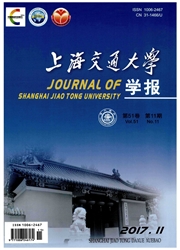

 中文摘要:
中文摘要:
文章对桨后普通舵和扭曲舵的水动力性能进行了试验研究,并采用计算流体力学方法对桨舵系统的水动力性能进行计算,得到了不同进速系数下的推力系数、扭矩系数以及敞水效率,并绘制了敞水性能曲线。通过桨舵模型试验值与计算值的对比,验证了计算方法的可靠性。为了进一步提高扭曲舵的节能效果,在扭曲舵前安装了舵球,优化舵球的半径后在舵球两端安装推力鳍,通过优选推力鳍的各个参数(安装位置、展弦比和安装角),使桨舵系统的敞水效率逐步提高。确定了舵球鳍的最优参数后,桨—扭曲舵系统的效率进一步提高1.2%。最后通过观察舵表面压力分布、舵附近轴向速度和迹线分布,分析了舵球鳍对桨舵干扰的影响。
 英文摘要:
英文摘要:
Experimental study on the hydrodynamic performance of ordinary rudder and twisted rudder after propeller is carried out, and the hydrodynamic performance of propeller-rudder system is simulated by means of computational fluid dynamics. The thrust coefficient, torque coefficient and open water efficiency as a function of advance coefficient are calculated, and the open water performance curves are obtained. By comparing the experimental and calculated values of propeller-rudder systems, the reliability of the calculation method is verified. To obtain more energy-saving effect of twisted rudder, rudder bulb is installed in the front of twisted rudder, and two thrust fins are installed on both sides of bulb after the optimization of the bulb radius. By optimizing the parameters (installation location, aspect ratio, installation angles) of the thrust fins, the efficiency of propeller-rudder system is improved progressively. After the parameters of the thrust fins confirmed, the system efficiency is improved by further 1.2%. Finally, by observing the pressure distribution of rudder surface, the axial velocity and the path lines near the rudder, the influence of bulb and fins on the in-teraction between propeller and rudder is analyzed.
 同期刊论文项目
同期刊论文项目
 同项目期刊论文
同项目期刊论文
 期刊信息
期刊信息
